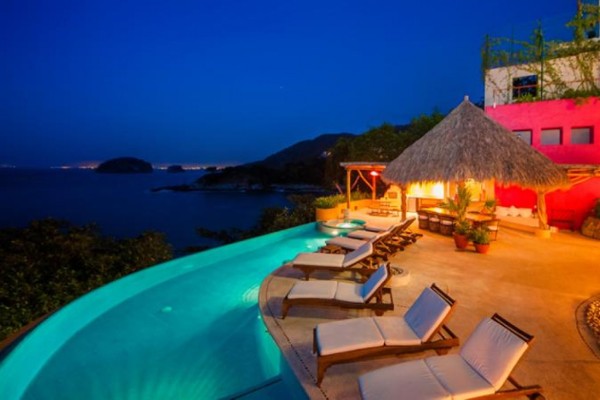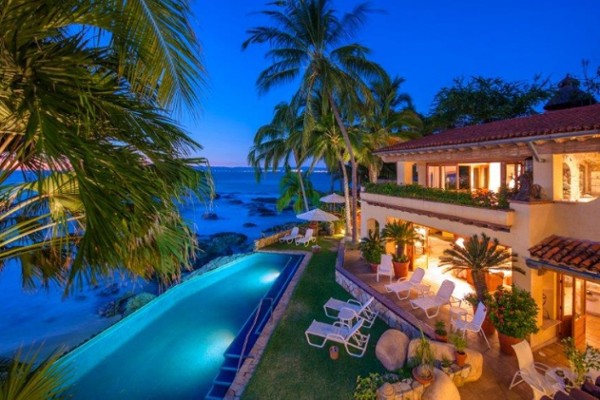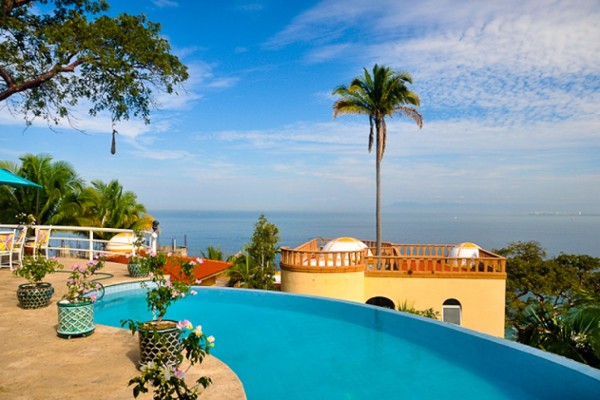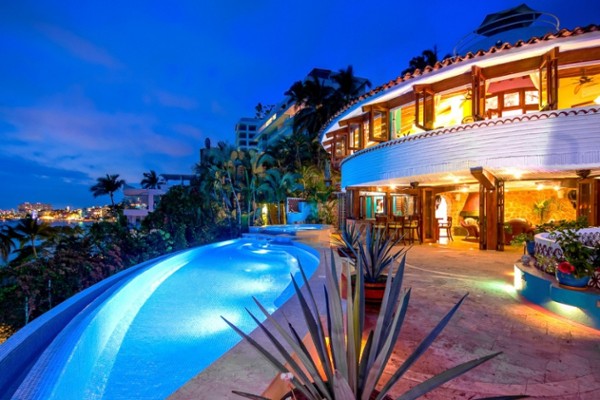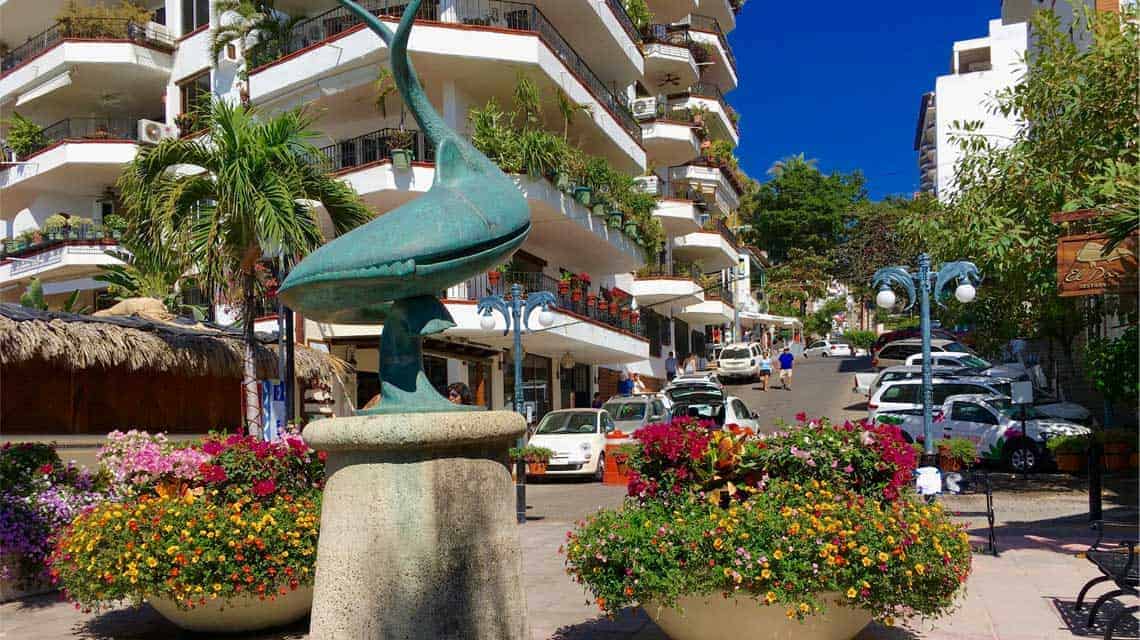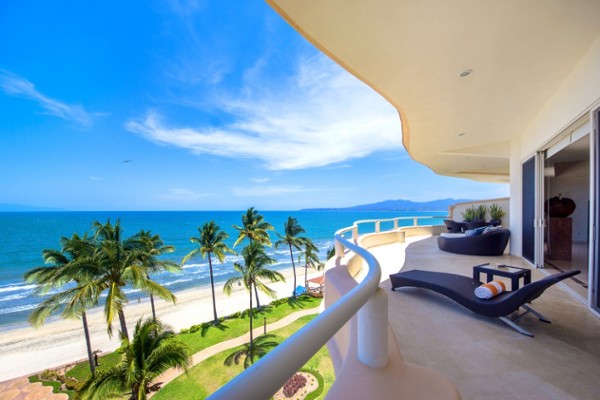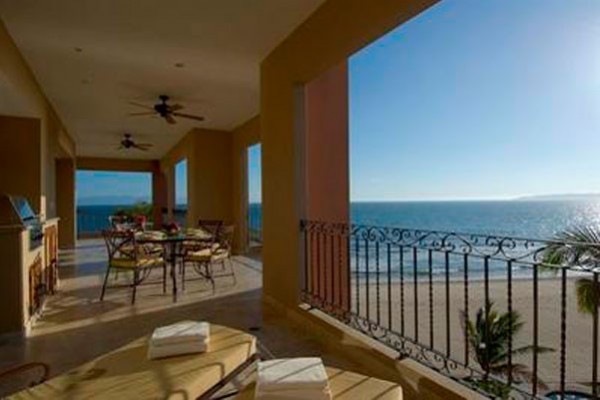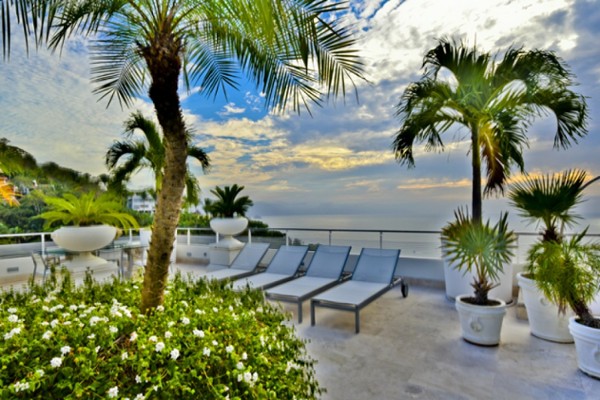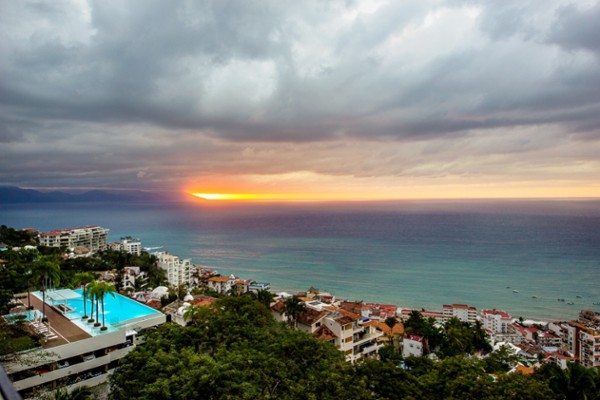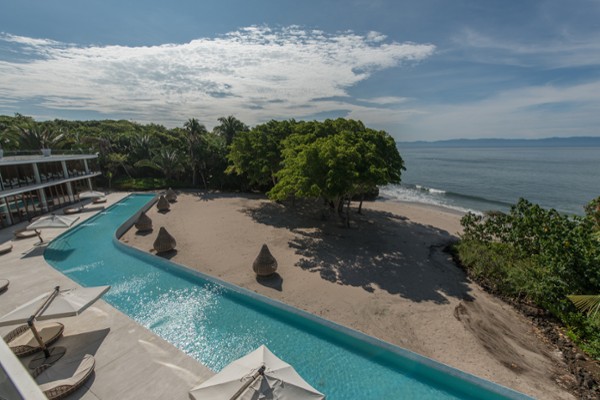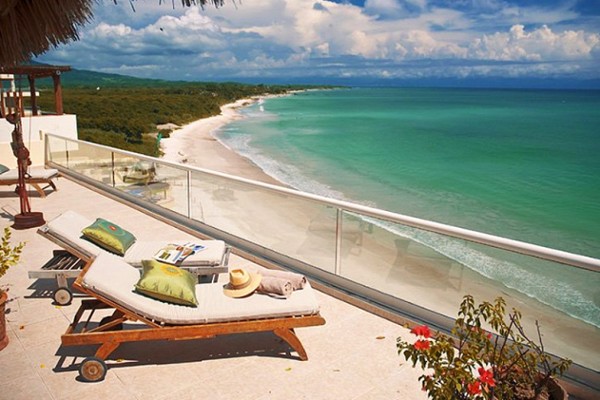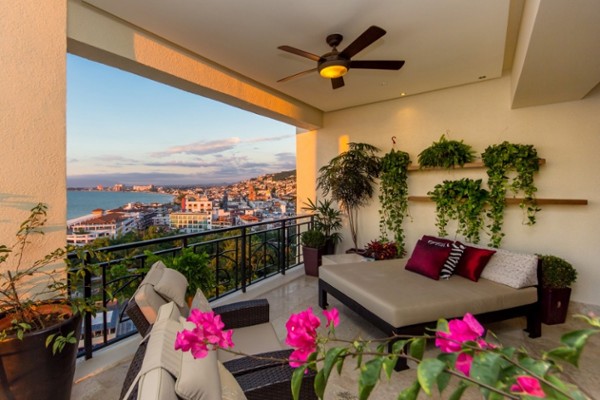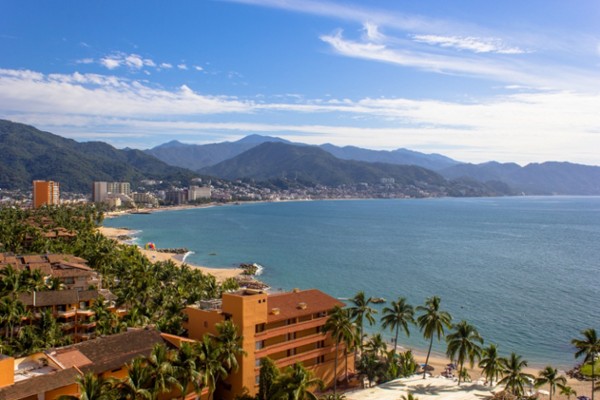There has been quite a bit in the news lately about Costalegre, the area south of Banderas Bay and still within the state of Jalisco, that runs from the southern tip of Banderas Bay (Cabo Corrientes) southeasterly to Barra de Navidad (and Jalisco’s border with the state of Colima). It is, for the most part, a spectacular coastline that has avoided major real estate development, comprised of just a few, small beachside towns scattered along its coastline, interspersed with a number of very high-end, quite private, luxury resorts. But some of the recent news reports have been rather vague as to where these new, proposed developments may be located and what they may entail. And that is understandable, not many are familiar with this rather unpopulated region of Mexico and good information is not always forthcoming.
Why the absence of development? Primarily because of the lack of infrastructure, such as adequate highways linking Costalegre to potential national visitors in major Mexican cities, and little-to-no access via air to attract international visitors. Costalegre is simply hard to get to. And secondly, there are some people who would prefer that it remains just as it is.
Costalegre begins with the coastal mountain peaks of Cabo Corrientes, lavishly covered in lush-green tropical forest, that quite precipitously falls to a rocky coastline interspersed with small coves and picturesque beaches. As the terrain slopes downward and southward it becomes flatter and dryer, more arid, nearly dessert-like. This continues on for miles, nothing but beach and saltwater lagoons, with just a few outbreaks of rock until reaching Chamela where the coast once again becomes rugged and the foliage more lush, extending right down to Barra de Navidad, the southern border of Costalegre.
Costalegre encompasses nearly 200 km of coastline but the largest coastal community (Barra de Navidad) has only about 8,000 residents. There are, however, portions of it that are not conducive to development. About 50 km of its coast consists mostly of estuaries and arid land networked with manmade waterways so it can be useful for farming. Another 40 km are privately owned, with owners who seem to have little or no intention of selling or developing, at least not anytime soon. Even so, this still makes Costalegre’s developable land bank similar in size to that of Banderas Bay.
Information regarding Costalegre is hard to come by. The principal players and landowners in the region tend to keep anything concerning the region to themselves, partly to protect their privacy and also, to some degree, inhibit development. It is very much like a private club that few are privy to and that’s the principal reason it has remained as it is for so long. There are a handful of very large landowners who are quite content to see things remain as they are. They have established their own urban plans that involve very low-density development, and prioritize protecting the ecology and natural environment. Many of their self-imposed regulations have been adopted by the local municipalities (which, actually, are more like large counties) and are now part of their “Plan de Desarollo,” or ordinance plan.
As the government works on infrastructure and better access, some real estate development is underway — at differing stages — by a few “players” in the region. There are six to eight major ones with parcels of around 1000 hectares along Costalegre. To put that in perspective, Punta Mita, probably the most well-known mega-development near Vallarta, has 600 hectares. These owners dominate the region and have considerable influence regarding the region’s development. A number of them have created a businessmen’s association for the region (Asociacion de Empresarios de Costalegre) to work with the government to improve regional infrastructure and assure that there are strong, enforceable rules in place regarding development. There also are probably another 10 smaller players with 200 to 500 hectares, interspersed with ejidatario communities along this whole coastline.
With these plans in place and the land, still mostly ejido, in the process of being regularized, change is taking place, although slowly. It seems that whenever the real estate market heats up in Vallarta, talk also starts up about Costalegre. But when the markets slows down, talk virtually grounds to a halt.
Costalegre, for the most part, is a long-term investment. There are a few new players who want to see growth, and seem to share a common local vision for low-density, high-value real estate development. The Jalisco state government now seems to be more motivated, envious of all the attention Riviera Nayarit has received in recent years, to see more development taking place within Costalegre. But in the past they’ve been held back by a lack of funding for infrastructure projects, and concerns of ejido property owners and environmental groups active in the region.
Current Status of Costalegre Infrastructure
The two closest international airports are in Puerto Vallarta and Manzanillo, meaning that a two-plus-hour drive is still necessary to reach much of Costalegre. The government has committed to a number of projects — the first being the construction of a new international airport near Chamela and located just behind the development of Xala. It is slated to be ready in 2017, and capable of receiving aircraft with up to 170 passengers. The only marina along this coastline is located near Barra de Navidad within the development of Isla Navidad, although there are proposed plans for one eventually in Chamela.
But plans are in place and work has begun to improve existing infrastructure such as the existing highway system. The first step involves widening the stretch of highway from Boca de Tomatlan to El Tuito, the most difficult part of the whole Costalegre highway as it winds south of Vallarta through the mountains to the coastal plains. Work has been on and off over the years, and when completed it could cut at least a half hour of driving time to principal destinations in Costalegre from the north. But that doesn’t solve the biggest bottleneck, which is the Vallarta airport traffic that has to first to get around and through Vallarta, and then over the coastal mountains of the Sierra Madre. That alone can take well over an hour.
In the south, a second phase involves improving and widening the highway from La Huerta to Melaque, which would give faster access to Costalegre from Guadalajara, and cut access time to about three or three and a half hours for most destinations in Costalegre.
Popular Coastal Communities
Along the coastline of Costalegre real estate inventory seems to be situated either at the low end or the very high end of the market, with not a lot in between. Lower-to-moderately priced properties can be found primarily in Barra de Navidad, (Costalegre’s largest coastal community), Melaque, and La Manzanilla, where there are good-size expat communities, primarily American and Canadian, living either full- or part-time.
Real Estate and Hotel Developments
The most recognizable development within Costalegre is Careyes, a high-end luxury home development with an anchor boutique hotel. There is also Las Alamandas to the north of Careyes, to the south is Cuixmala and Tamarindo, while at the southern most point of Costalegre, is Isla Navidad.
Careyes, popular with American celebrities and European royalty, was founded in 1968 by Gan Franco Brignone and continues today under the guidance of his son Giorgio. It is built around a beachfront hotel with 40 luxury homes and assorted bungalows perched on the cliffs surrounding it. The Brignone family, in building and owning a number of these homes themselves, created what has become known today as the “Careyes style” of architecture, where the Mediterranean meets Mexico. For years its elite visitors have stayed in these homes, or “casitas,” or the Careyes boutique hotel. Development has been slow, but purposeful. The result is one of the most coveted coastlines in the world.
Las Alamandas, situated in the northern region of Chamela, is owned by Isabel Goldsmith, where she has her home and a small boutique hotel with only 16 suites accommodating up to 42 guests, all located on 600 hectares of private land. It is a self-contained, ecological reserve with four pristine beaches and lagoons, but she does not offer any real estate purchase opportunities.
Cuixmala, just 10 minutes south of Careyes, was the private estate of British financier James Goldsmith. The resort consists of over 1,000 hectares and is set within 13,000 hectares of the Cuixmala Biosphere Reserve made up of tropical forest, lagoons and spectacular beaches. Today it is owned and managed as a very high end luxury resort hotel by his family. Goldsmith donated much of his land for the Chamela-Cuixmala Biosphere Reserve, forming a foundation in cooperation with the National University of Mexico, and the family remains committed to protecting the ecology and environment in this region.
Isla Navidad At the southernmost point of Costalegre within the region of Barra de Navidad, is Isla Navidad, which features two hotels, a full-service marina with 200 slips capable of accommodating boats up to 150 ft. There is also 27-holes of golf designed by Robert von Hagge and real estate opportunities such as golf, beach, and marina homes and condominiums. Isla Navidad is situated on 500 hectares across a small lagoon from Barra de Navidad.
New Projects Under Development
The developments that most of the news stories have focused on recently are The One & Only Santa María in Xala, the Cheval Blanc in Chamela, and a Four Seasons hotel in Tamarindo.
Xala is a large peninsula of land within the coastal region of Majahuas, that has 8 km of beach on its western border and a very large lagoon along its eastern length, totaling 1,200 hectares. It is located just north of Las Alamandas, and when fully developed will consist of a luxury resort hotel (One & Only), residences and condos with amenities such as spas, beach clubs and possibly a golf course. It will be based around a “Hacienda Lifestyle by the Sea” with the master plan designed to incorporate the social and cultural elements of the region including a town “Pueblo” and an incorporated Fisherman’s Village. The proposed One & Only Santa María de Xala resort hotel will consist of seventy-five luxury villas and suites with private pools and the new One & Only Residences. Construction is scheduled to commence this year on the hotel. The new Chamela airport under construction is situated just east of Xala.
South of Xala and north of Careyes, within the region of Chamela, the Moët Hennessy Louis Vuitton (LVMH) Group is developing The Cheval Blanc, a large hotel and residential project that will be part of their luxury hotel collection under the same name. This is a collection of boutique hotels that can be found in places such as the Courchevel French Alps, the Maldives and Saint Barth Isle of France. The master plan consists of 910 hectares of land and will include an 18-hole Robert von Hagge golf course, 68-room Cheval Blanc Hotel and eventually up to 525 real estate units, all either oceanfront or ocean view. The hotel is slated to be complete by 2017 with real estate opportunities to soon follow.
Tamarindo is a 150-hectare development within the region of Tenacatita that is owned by businessman/banker Roberto Hernandez, and was originally developed by Grupo Situr in the late 90s. There were to be 52 estate lots, a golf course and a boutique hotel. The hotel and golf course were built, and while the hotel was in operation it was spectacular, consisting of individual casitas either along the beach or in the lush tropical jungle behind. The golf course is still operational, but few homesites were ever sold and fewer homes were ever built. The hotel shut down a few years ago and is re-opening now as the Four Seasons Tamarindo resort hotel. Whether the original hotel casitas will remain is uncertain, but it will certain be larger, increasing up to 160 rooms. It is expected to begin renovations and construction this year.
With the new airport now a certainty, and these new projects under development, perhaps Costalegre’s time has finally come.
You’ll find more information, and a better map showing the locations of these projects, at MLSVallarta.com. You’ll also find additional information about some of the real estate that is currently listed for sale along this coastline.

